You’d think if a husband sacrificed his daughter to the gods just so he could get favourable winds to set off on an expedition with his war bros and bring back his brother’s runaway wife, even if he didn’t then fight a long war, saw thousands die as a result, sacked a city, and women were raped and enslaved, that he was probably going to be killed by his own wife when he got home, anyway. Even before he crowned all this chaos by marrying a younger woman while he was away. What happens in Vegas, they say, stays in Vegas, but what happens at Troy is bound to come back and bite a bunch of Greek kings on the arse. In this particular case it’s Agamemnon’s arse, the wife is Clytemnestra, the unfortunate daughter is Iphigenia and the younger bride is King Priam’s daughter, Cassandra, thought by some to be a little bit crazy. She keeps making these prophecies, you see, that no one believes, even if she has an uncanny track record of being right. She’s already foreseen that Agamemnon’s first marriage will end in slaughter, and she’s willing to go down with him, to avenge her father.
Oh, and the brother is Menelaus, infuriated that his girl, Helen, has been whipped off to Troy by that irredeemable playboy, Paris. Cue the armada …
If you are intending to read The Women of Troy, I have to be honest: this is not really what the book is about. But you know how it is with the Trojan War. There are a lot of details and side plots. Where does it really start? Where does it really end? Yet Agamemnon’s future ill-fated return home will prove relevant, so this was as good a place to begin as any. Here we go …
The Women of Troy is the second book in Pat Barker’s Trojan series, and the story will be concluded when Agamemnon makes that return journey in the third book, The Journey Home. The Women of Troy is the story of the Greek forces after the fall of Troy, and of the Trojan women who have been enslaved or married by the Greek commanders. The first book in the series, The Silence of the Girls, roughly coincides with the events of Homer’s Iliad: although Homer doesn’t give us specifics about Briseis’ experience during the fall of her city, Lyrnessus, which resulted in her capture and her becoming a war prize for Achilles, the Greeks’ greatest fighter. (AN ASIDE: It’s a terrible thing, a human being made a prize of war, but this is an era when slavery was common and considered normal, and the taking of prizes was an important part of this war culture. Cities were invaded, valuables were taken as part of the reward, and that included women). When Agamemnon takes Briseis from Achilles in compensation for his own girl, whom he has had to give back to a local priest to appease the gods and stave off a plague (or a wave of attacks by Apollo’s arrows, to speak more mythically), he is imposing a terrible humiliation, and thus we have the moment when the story of Homer’s Iliad begins, some ten years into the war. His narrative is narrowly focused on Achilles’ feud with Agamemnon and the results of that. His account finishes shortly after the funeral of Hector, before Achilles’ death, and before the Trojan Horse and the fall of Troy.
Pat Barker, however, focuses primarily on the experiences of Briseis in this series: how the war impacts women who are made slaves or wives against their wills. This story of this second novel is structured around an obscure detail in myth that has shaky provenance. Because Barker is drawing from ancient sources, it is interesting to consider where her story is coming from and how she has imaginatively claimed it as her own. So, first, I thought I would cover some background for The Women of Troy. If you’re less interested in this and prefer to read about the book more directly, scroll down to ‘Some Thoughts About the Novel’ or click here to get there.
About Sources
If you want a rough idea what Barker’s series is drawing from you need to go beyond Homer, especially for this second book, since it begins after Homer’s Iliad finishes. First. there are a variety of ancient texts known as the Epic Cycle which tell the story of Troy. Homer’s Iliad and Odyssey are the most complete of those that has survived. Apart from Homer’s epics, the rest of the poems have now been lost and exist only in fragments, usually of only a few lines, and what we know of these stories often comes from summaries, through references by other writers or by writers like Ovid, who have used aspects of the Epic Cycle as a basis for their own works. For example, the Athenian playwright, Aeschylus, based his plays known collectively as The Oresteia, upon a poem now lost to us, Nostoi (Return Home), a part of The Epic Cycle, which was an account of the various fates of the Greek heroes on their way home from the war. And the difficulties Odysseus faces in his attempt to return home are well documented in Homer’s Odyssey; it takes him and his men just as long to get home as it took to fight the war. But the Nostoi told the various fates of other fighters. As an example, Diomedes is delayed by storms while Nestor makes it back relatively easily. Little Ajax, however, is wrecked off the coast of Euboea by a lightning bolt from Athena, angry at his rape of Cassandra, but he survives. Poseidon kills him anyway, not for the rape, but for his boasting that he has thwarted the gods’ efforts to kill him. Poseidon splits the rock upon which he has escaped to safety and he drowns. The gods are like that.
The third book in Barker’s series, The Voyage Home, draws from Homer’s Odyssey, but it also draws upon events from Aeschylus’ play, Agamemnon, in which Agamemnon is murdered by his wife, Clytemnestra, upon his return home. This book, The Women of Troy, is not based on Homer, but other more obscure myths with sketchy details, leaving Barker a wide creative berth. The novel begins with the Trojan Horse and the fall of Troy, and the death of Priam is a major aspect of the plot. But to find a source for these specific events you’d best look in the second book of Virgil’s Aeneid, which introduces the Trojan Horse and finishes off the Trojan War, even though the work is more interested in a version of the Roman origin story, overall.
The Women of Troy takes up the story roughly from that point, although Barker allows herself some overlap with her first novel in the trilogy to properly reintroduce us to Pyrrhus, Achilles’ son, who has arrived in Troy after his father’s death towards the end of the first novel. Nevertheless, he gains honour from his part in the invasion of the city, and by personally killing Troy’s King Priam. But Pyrrhus is an insecure fellow. The novel begins with the Greek soldiers huddled in the bowels of the Trojan Horse as it is brought into Troy. We are privy to Pyrrhus’ insecurity and fear: first that they may be discovered and killed by the Trojans; but also, because he has a mighty shit on board, and Pyrrhus cannot bear the humiliation of having to be the first to use the primitive facilities they have installed at the back of the horse which would possibly betray their presence to the Trojans. He is young with a legendary father and he has much to prove. Pyrrhus’ character is a central driver for Barker’s plot.
But the main driving focus of the plot of The Women of Troy is around the thwarted efforts of the Greek forces to leave after the city is conquered and its riches taken. A strong wind blows against the coast, preventing the ships from leaving the harbour. As far as my knowledge extends, Barker is taking some poetic licence with her plot here, possibly based on obscure versions of the tale of Polyxenia, and it is an interesting background to briefly explore.
Based on my knowledge, there was no mass delay for the Greek forces wanting to leave Troy, except for those versions of Polyxena’s story which are said to be associated with a wind. King Priam’s daughter is sacrificed on the grave of Achilles, and her death is sometimes compared to the sacrifice of Iphigenia at the beginning of the war. I imagine the symmetry is a little hard to resist. In most versions of the story, she is sacrificed to appease Achilles’ ghost. Achilles is said to have fallen in love with her, and it was through Polyxena that Achilles’ weak spot – his heal – was revealed to her brother, Paris. She likely revealed this information because Achilles killed another brother, Troilus, over a prophecy. Yet some versions of her story make her a Trojan Iphigenia, sacrificed to appease the gods for favourable winds. This is suggested in the current entry in Wikipedia:
Some claimed Polyxena committed suicide after Achilles' death out of guilt. According to Euripides, however, in his plays The Trojan Women and Hecuba, Polyxena’s famous death was caused at the end of the Trojan War. Achilles’ ghost had come back to the Greeks to demand the human sacrifice of Polyxena so as to appease the wind needed to set sail back to Hellas.
But in Euripides’ play, Hecuba, the Chorus tells the story of Achilles’ ghost, which appears above his tomb as the fleet is actually leaving in full sail:
- [Achilles] checked the sea-going vessels
- When sails were already taut on the rigging
- With this cry: ‘Where are you going, you Greeks,
- Abandoning my grave without a gift?’
Euripides, Hecuba lines 113-116
Later in the play Odysseus tells Hecuba that Polyxena has to be sacrificed to honour Achilles as a warrior, or else men may question whether it is in their interests to fight in future wars if men like Achilles are not shown honour and respect.
However, Robert Graves suggests that evidence for the association between the wind and the sacrifice comes from this same play: “She was sacrificed on Achilles’ tomb, in the sight of the whole army, who hastened to give her honourable burial; whereupon favourable winds sprang up at once.” Graves cites lines 521-582 as his source for this statement. His source is Talthybius’ account to Hecuba of Polyxena’s sacrifice. But the only mention of winds in this speech is from words reportedly spoken by Pyrrhus in prayer to his father:
- In return, grant us winds, strong and favorable.
- Free the prows and bridling ropes of our ships,
- and fill our sails for safe passage home.
Euripides, Hecuba lines 539-541 (trans. Jay Kardan and Laura-Gray Street )
As a comparison, Philip Vellacott’s translation reads:
- … look on us
- With favour, granting that we may unmoor our ships,
- And with a prosperous voyage come safe to our own land
This is not quite the direct connection – a sacrifice for favourable winds – suggested by Graves, especially since the fleet had already been sailing out from Troy “taut on the rigging” before Achilles’ ghosts appears. Instead, this seems like a formulaic prayer for men about to embark on a sea voyage in this era. There are only two other associations with wind in the play. First, wind is used in a slightly earlier speech by the Chorus, representing Trojan women made prisoners by the Greeks. The Chorus invokes wind as imagery for their unknown fate: the idea that their lives will now be subject to forces beyond their own control. Also, in the second half of the play, Agamemnon has time to help Hecuba affect her revenge against Polymestor, a Thracian king who has killed her son, because there is a delay setting off because of the wind. However, the wind blows true, again, at the end of the play. But this is associated with Hecuba’s revenge, not Polyxena’s sacrifice, and the lull in the wind is not the long delay that features in Barker’s novel.
I can find no association between Polyxena’s sacrifice and delays caused by unfavourable winds in Euripides’ The Trojan Women, either. A remark made by Andromache, Hector’s widow, suggests that Polyxena was sacrificed for Achilles’ glory; a point which has already been made:
- Polyxena across Achilles’ tomb
- Lies slain, a gift flung to the dreamless dead.
There may be other sources that support the idea of a contrary wind after the end of the war that I am not familiar with. I will mention Seneca’s Troades as an end to this discussion. The play dramatizes the aftermath of the Trojan War. In Seneca’s play Talthybius speaks of the problem of the winds explicitly:
- Talthybius: Alas, 'tis thus the Greeks are ever doomed
- To lie impatient of the winds' delay,
- Whether on war or homeward journey bent.
Seneca, Troades lines Act II, lines 163-165
Talthybius is finally giving us that beginning/end of war symmetry. But the demands made by Achilles’ ghost mention nothing of winds in the play. He speaks bitterly of the Greeks leaving him without a prize to honour his efforts, but his demands are explicit:
- Polyxena, once pledged to me in life,
- Must by the hand of Pyrrhus to my shade
- Be led, and with her blood my tomb bedew
Achilles demands Polyxenia as his bride in the afterlife. Agamemnon refuses even though he is reminded that he killed his own daughter. It is not until Calchas, the seer, is consulted, that the two issues are conflated:
- The maiden must be slaughtered on the tomb
- Of great Achilles. Thus the rite perform:
- As Grecian maidens are in marriage led
- By other hands unto the bridegroom's home,
- So Pyrrhus to his father's shade must lead
- His promised bride.
- But not this cause alone
- Delays our ships: a nobler blood than thine,
- Polyxena, is due unto the fates;
- For from yon lofty tower must Hector's son,
- Astyanax, be hurled to certain death.
- Then shall our vessels hasten to the sea,
- And fill the waters with their thousand sails.
Seneca, Troades Act II, lines 362-370
Finally, we have here Polyxenia being sacrificed not just for Achilles, but for favourable winds. But Calchas has thrown in a new element: Astyanax, Priam’s heir, must also be sacrificed. Andromache, his mother, tries to convince Odysseus that he is already dead, but he is hiding in Hector’s tomb. When Odysseus threatens to despoil the tomb if the boy is not given over, the game is up. If the tomb is pulled apart the large rocks that form its structure will crush Astyanax. Andromache, however, believes that the decree given for her son’s death has a different motive: it is a means of ensuring Troy’s future compliance and safeguarding against reprisal:
- Lo, thou must die,
- For, though a child, thou art too greatly feared.
Seneca, Troades Act II, line 789
At the end of the war, it is the vanquished who are sacrificed, and there are too many conflicting reasons given to say that any one of them is the real reason.
So, the evidence that the sacrifice is made for favourable wind is not widespread in Polyxena’s myth as far as I can see – not the usual accepted version – although there are sources for it.
But Barker is doing something different, anyway. First, we’ve already mentioned Agammemnon sacrificing his daughter, Iphigenia, just to leave Greece. Iphigenia’s story is recounted by Euripides in his play, Iphigenia in Aulis. This is where that bit becomes relevant. Barker makes the whole expedition to Troy even more irksome for the Greek forces by delaying their departure with a mighty wind that blows onshore and prevents their boats leaving the harbour for an extended period of time, thereby repeating the circumstances that plagued the expedition’s setting off in the first place. It’s suggested in Seneca, but the difference between Barker and Seneca, however, is that Barker’s story places the burden of lifting any wind-arresting curse on the Greek forces, whose responsibility it would undoubtably be. Which god have they offended and by what action, to cause such an incessant and troubling wind? Briseis feels there are some obvious answers. Little Ajax raped Cassandra, a virgin priestess, on the altar of Athena: a little bit of desecration, if you’re not counting the rape. And Pyrrhus has not only killed Priam – an old man wearing his armour and barely able to raise a weapon – but he has left his body to rot on the beach and forbids anyone to bury it, on pain of death. Barker’s basis for this gruesome detail appears to be these lines from Virgil:
- A power trunk is lying on the shore.
- The head wrenched from the shoulders.
- A corpse without a name.
The Aeneid Book 2, lines 690-692
Now we have a problem (the wind) and a cause, which, if any must be attributed to natural phenomena, is predicated by masculine violence – of rape, war and inhumanity – rather than the capricious rights of a slighted ghost. Barker’s reimagining of the myth makes it relevant to us; makes it a modern story.
But from the perspective of male characters in this book, the affront to the gods is a mystery, and any insight a woman may have into the matter, like Briseis, will only be ignored because of the woman bit. Women have no agency. None are even suspected of trying to bury Priam. Only men are suspected. Women are somewhat invisible in this world beyond the purposes of cooking, sex and reproduction.
It’s important to note here that Barker, herself, mentions Polyxena. In Barker’s novel Polyxena has already been sacrificed in the main part of her story, and still the winds blow wrong, so the matter of Seneca’s version is moot. In fact, the only reason given for her death, according to Barker’s version, is to appease the ghost of Achilles: “That’s why Polyxena had to die. Give him a girl, he might stay underground.” Other than that, Barker's resolution bears no resemblance to Seneca, but the spirit of the ancient writers is certainly preserved in her new plot.
Of course, we should be alert to another borrowing Barker has made here. The plot of The Women of Troy is basically that of Antigone, too. Leaving a body unburied is a defilement of an enemy or traitor. In Sophocles’ Antigone King Creon decrees that the body of his traitorous son, Polynices, should be left outside the city walls. Antigone knows this is an unnatural act and in contravention of the gods. She is appalled by her father’s decree and chooses to defy his will to bury her brother. Creon is a real bastard and orders that Antigone be buried alive. She hangs herself.
So Antigone is a good comparison to make with The Women of Troy. Priam is left rotting on the beach and a pious young woman assigned to Briseis to keep her company, Amina, finds she cannot let her old king lie like an animal, with no means by which he may enter the Underworld. This brings her to Pyrrhus’ attention and places at her in danger of execution.
And Barker has adapted disparate versions of the same story and created something entirely new.
Some Thoughts About the Novel
The Women of Troy owes a lot to the spirit of several ancient sources, but it forges its own way as a feminist retelling of this story.
As a character driven story, The Women of Troy is primarily the story of Pyrrhus and Briseis. Each is growing into a role of leadership. Briseis understands that Andromache, Hector’s widow, is not in a mental state to lead after the death of her husband and child, while Helle is too focused on her own welfare, and Amina’s religious purity makes her unbending and too narrowly focused to be a leader of this disparate group of women. It is with Briseis whom we identify. Her story is told in first person. Barker allows her to recount memories from the first book through the motif of wool, a symbol of female industry, in which spinning represents unspooling memory. Her memories of her sister’s probable death during the sacking of Lyrnessus, or the trembling fear she feels on the first night she waits for Achilles to take her to bed, make her a sympathetic character, but also makes her empathetic to the fears and insecurities of all the women captured more recently from Troy, whom she may now support.
But it is through the peccadilloes of Pyrrhus’s character that the plot is given life. Men, after all, have agency in this world. Women do not. Pyrrhus’ chapters are told using third person narrative. He is not a sympathetic character. The nearest he comes to acting with any nobility is his decision to treat Helenus, Cassandra’s brother, with some kindness. He helps him bath his wounds and feeds him. But in these scenes, Pyrrhus is merely trying on a new version of himself; trying to ape the compassion shown by his father to Priam, because he simply does not understand it. His father was so much a greater man, despite his faults. On the whole, Pyrrhus is a spiteful, insecure and cruel young man. He kicks Calchas, the priest, in the arse to humiliate him, and he drives a knife into Helenus – just a little, he would tell you – even though he knows Helenus has nothing to do with Priam’s corpse. It is a mean act that elicits some shame in him, at least. But only because Pyrrhus is a man uncertain, confused; a man incapable of understanding the noblest act of Achilles, when he returned Hector’s body to Priam and treated Priam with respect.
We first see Pyrrhus sitting in the wooden horse, remembering his old horse from childhood, Rufus, which he seems to have formed a greater bond with than any human. From the start, Pyrrhus’ old horse provides us with a neat metaphor for Pyrrhus, himself. Rufus was riddled with redworm, a parasite fatal to horses. Pyrrhus remembers his old horse while he sits frightened inside the wooden horse with his companions, as they are about to invade and destroy their hosts. But Pyrrhus’ mind is also riddled with the memory of his father, which he cannot overcome. He drags Priam’s body behind his chariot in imitation of Achilles’ treatment of Hector, and he encourages the loyalty of his father’s Myrmidon force. But at night he looks into his mirror and strains to see Achilles staring back: sometimes he thinks he does, but he is also likely to see “a taunting homunculus.” He is petty – he whines about the loss of Hector’s shield he donated for a funeral rite, and now regrets the loss of – and he is insecure in his masculinity. Sex with Andromache, for him, is merely a conquest, not a pleasure – “The walls of Troy had been well and truly breached” – for he is expected to put a Greek baby in her. But when he does demand a slave woman, beyond the call of duty, he does little more than masturbate in front of her. There is the merest hint that Pyrrhus not only labours in the shadow of his famous father, but also hides a sexual secret that would undermine his reputation in this world of men. Pyrrhus’ actions, on the whole, exhibit the worst, most ignoble character of war, if war was ever meant to be noble: if we were ever meant to find anything noble in the warriors of Troy. He is a man without a guiding principle of his own, haunted by candles that sit in his tent, like accusing eyes, watching him at night.
The novel broadly portrays the world of men and women through its characters. No woman in this novel is truly free. Even if Briseis feels she has escaped the worst of captivity by marrying Alcimus, she is aware that she is treated with more respect than other women in the camp because she is pregnant with Achilles’ child. The world of women and men feels sharply delineated. Pyrrhus and Briseis make us feel this in their differences not only in status, but as leaders within the camp. The contrast is made stark when we consider Calchas and Cassandra.
Neither Calchas nor Cassandra chose their positions as priest or priestess. Calchas is channelled into the priesthood when he is found performing a homosexual act with two other men. Cassandra is forced to become a priestess because her ‘madness’ made her unmarriageable. But while Calchas has lost favour with Agamemnon, it has a lot to do with his status as a Trojan, despite his long service to the Greeks. When he is needed, he is called upon and he is believed.
But Cassandra represents the fate of all women in this world.
You must know the story? How Apollo kissed me and gave me a gift of prophecy, and then when I refused to sleep with him, spat in my mouth to make sure I’d never be believed.
While Calchas must muddle around and do some detective work to try to cobble together a response to Agamemnon’s question about the problem with the wind, Cassandra merely knows when she makes her predictions. It is a rather crude and simplistic reduction but it is also true: men interpret their world and bend it to their whims, while women are of the world. The fact that they give birth ties them far more intimately to their own bodies and the realities imposed upon those bodies, along with men’s efforts to control them. Men, on the other hand, strike out and make shit up.
It’s a thought reflected in the observation of portents. Calchas witnesses an eagle struggling to lift a large fish from the sea. The eagle is blown onshore, exhausted, and Calchas interprets this as a sign of the Greek’s own dilemma; their inability to launch their ships. Briseis has a different feeling about the eagle:
When he looked down, he [the eagle] saw … dinner. Nothing else – nothing complex, nothing difficult, nothing that could possibly be a threat – just dinner. There was a grandeur in the simplicity of it – and I hated the idea of Calchas rubbing his smeary fingers all over it, trying to extract a “meaning.” The eagle was its own meaning.
In this observation we see so much of what the war is about. It’s not just about getting something: it has to be about honour, reputation, power and all the other associations and meanings that separates the motivation for war from the need to survive, and makes its objectives so multifarious and ineffable. But this is not an insight available to Pyrrhus. When he makes a sacrifice, two eagles flying nearby are all he needs to know that Zeus approves and he has backed the right horse.
So, The Women of Troy is not strictly a retelling, as many other novels in mythological fiction have recently been. It straddles two points in a famous story. It exists in the interstices of our inherited culture, where a story of women who have remained silent for most of history, can be told: a narrative of slaves, wives, mothers and concubines; women who act as midwives to history, but not its makers. This is still the story of men like Pyrrhus and Agamemnon, but we are offered a new perspective, too: a sense that the stories told of great men are the stories they tell about themselves, first, like Pyrrhus gazing into his mirror and willing his father’s reflection to appear. As for the women, they are ancient Greeks and Trojans, but their story is the story of many women throughout history, and the silences that have been imposed upon them.
The Women of Troy Trilogy

 RSS Feed
RSS Feed Facebook
Facebook Instagram
Instagram YouTube
YouTube Subscribe to our Newsletter
Subscribe to our Newsletter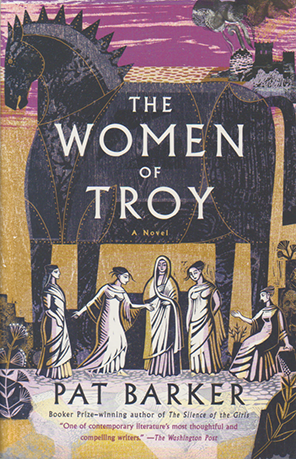

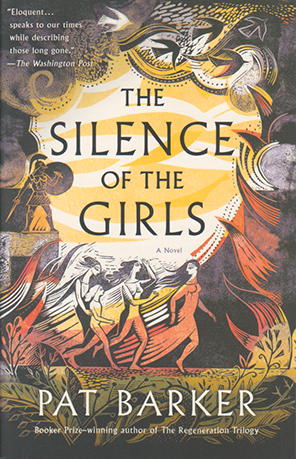
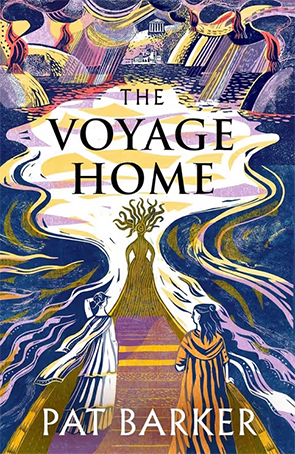

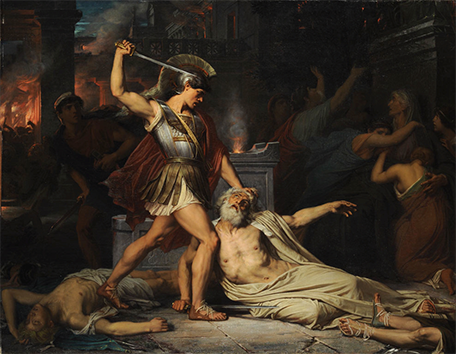
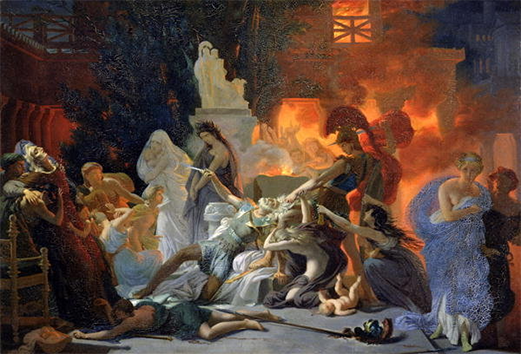
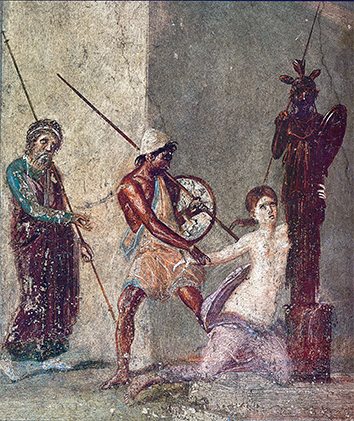
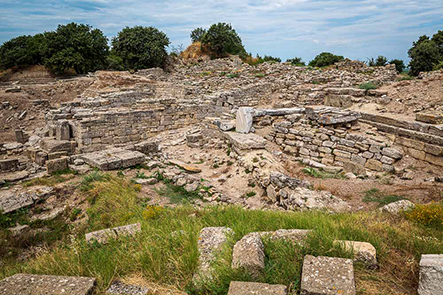
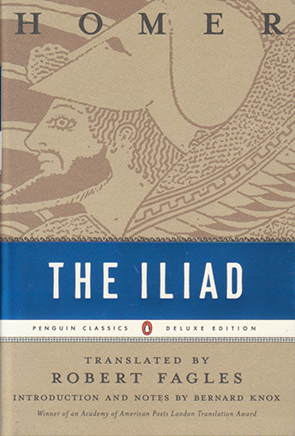

No one has commented yet. Be the first!